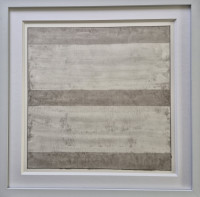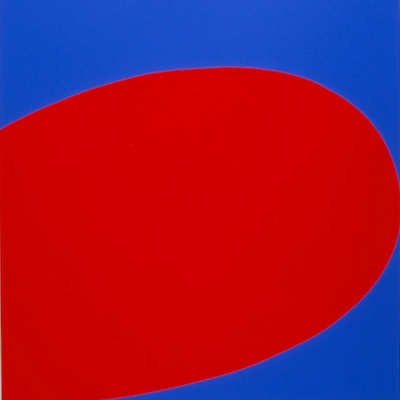
Details
Artist
Styles
// Sean Scully's Liliane 5 is a minimalist yet evocative aquatint print that showcases the artist’s signature style of geometric abstraction. The composition is divided into two rectangular forms, one placed above the other. The top rectangle, split between warm peach and earthy brown tones, contrasts with the muted monochromatic rectangle below, which fades from light gray to deep black. The interaction between the contrasting colors and the soft transitions in tone create a sense of balance and depth, emphasizing Scully’s mastery of form and texture. The bold simplicity of the shapes invites viewers to reflect on the relationship between structure and emotion in abstract art. This limited edition print, signed and numbered, exemplifies Scully’s continued exploration of geometric forms and color fields.
Liliane 5, 2010
form
Medium
Size
86.4 x 71 cm
- Inches
- Centimeters
Edition
Price
- USD
- EUR
- GBP
Details
Artist
Styles
// Sean Scully's Liliane 5 is a minimalist yet evocative aquatint print that showcases the artist’s signature style of geometric abstraction. The composition is divided into two rectangular forms, one placed above the other. The top rectangle, split between warm peach and earthy brown tones, contrasts with the muted monochromatic rectangle below, which fades from light gray to deep black. The interaction between the contrasting colors and the soft transitions in tone create a sense of balance and depth, emphasizing Scully’s mastery of form and texture. The bold simplicity of the shapes invites viewers to reflect on the relationship between structure and emotion in abstract art. This limited edition print, signed and numbered, exemplifies Scully’s continued exploration of geometric forms and color fields.
- Recently Added
- Price (low-high )
- Price (high-low )
- Year (low-high )
- Year (high-low )
What is Colour Field Painting?
Colour Field Painting is an abstract style characterized by large areas of a single color or simple, solid colors. The term was first used in the 1950s to describe the work of three American Abstract Expressionist painters—Barnett Newman, Mark Rothko, and Clyfford Still. Their work emphasized the emotional power of color and the creation of vast, meditative spaces through expansive color fields.














